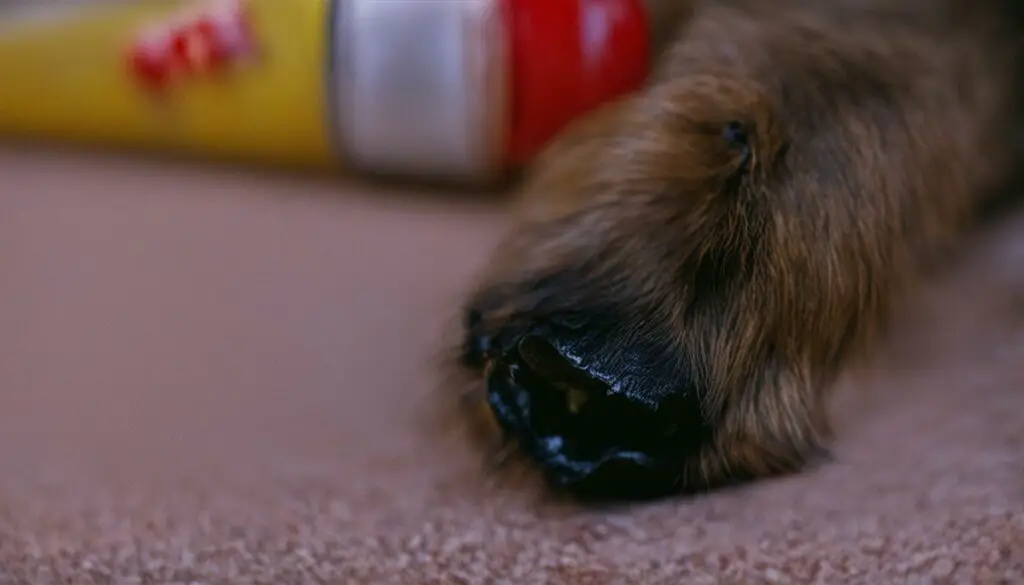Dogs tend to be high energy and have a lively nature to them, which can result in bumps, cuts, and bruises. If your dog has a cut, scrape, or burn, your first thought may be to reach for the Neosporin since it is used to treat humans. However, it is important to consult your veterinarian before administering any medications to your pet. Neosporin can be safe for dogs in small doses, but large amounts can be toxic and lead to symptoms such as diarrhea, vomiting, tremors, and seizures. If your dog has ingested Neosporin, it is important to seek immediate veterinary care.
Key Takeaways:
- Consult your veterinarian before giving any medications to your dog.
- Neosporin can be safe for dogs in small doses with veterinary guidance.
- Ingesting large amounts of Neosporin can be toxic and lead to symptoms.
- Seek immediate veterinary care if your dog has ingested Neosporin and is displaying symptoms.
- Consider alternative pet-friendly treatment options and proper wound care for your dog.
Can You Use Neosporin on Your Dog?
Neosporin, a popular topical antibiotic ointment used to treat human wounds, can also be used on dogs in small doses with the permission and instructions of a veterinarian. However, it is important to take precautions to prevent your dog from ingesting Neosporin, as large amounts can be toxic. If you’re unsure about using Neosporin on your dog or the proper dosage, it is always best to consult your veterinarian for guidance.
When it comes to using Neosporin on dogs, it’s crucial to remember that dogs have different physiological systems than humans. Therefore, the dosage and type of medication that may be safe for humans might not be appropriate for dogs. Consulting with a veterinarian ensures that the correct dosage and course of treatment are administered, reducing the risk of any adverse reactions or potential toxicity.
To prevent your dog from ingesting Neosporin, it is important to cover the treated area with a sterile dressing and prevent your dog from licking it off. Dogs have a natural instinct to lick wounds, and if they ingest a large amount of Neosporin, it can lead to gastrointestinal upset and other symptoms. It is always better to err on the side of caution and consult your veterinarian for alternative pet-friendly treatment options if you are concerned about your dog ingesting Neosporin.
| Pros of Using Neosporin on Dogs | Cons of Using Neosporin on Dogs |
|---|---|
|
|
In conclusion, Neosporin can be used on dogs in small doses with the guidance of a veterinarian. However, it is essential to consult with a veterinarian to ensure the correct dosage and to take preventative measures to prevent your dog from ingesting the medication. If you have any concerns or questions about using Neosporin on your dog, it’s always best to seek professional advice.
What Happens If My Dog Ate Neosporin?
If your dog has ingested a large amount of Neosporin, it can lead to toxicity and various symptoms. Some common symptoms of Neosporin ingestion in dogs include diarrhea, vomiting, tremors, excessive drooling, skin lesions, seizures, and a lack of appetite. These symptoms indicate that your dog may be experiencing a toxic reaction to the medication.
In addition to these symptoms, if your dog has swallowed the Neosporin tube, it can cause a blockage in their digestive tract. This can be a serious condition that requires immediate medical attention. It is important to closely monitor your dog for any signs of toxicity or blockage if they have ingested Neosporin.
Symptoms of Neosporin Toxicity in Dogs:
- Diarrhea
- Vomiting
- Tremors
- Excessive drooling
- Skin lesions
- Seizures
- Lack of appetite
If your dog is displaying any of these symptoms after ingesting Neosporin, it is important to seek immediate veterinary care. A veterinarian will be able to assess the situation, provide appropriate treatment, and ensure the well-being of your dog.
| Severity of Symptoms | Action |
|---|---|
| Mild symptoms (diarrhea, vomiting) | Monitor your dog closely and contact your veterinarian for guidance |
| Moderate symptoms (tremors, excessive drooling) | Contact your veterinarian immediately and follow their instructions |
| Severe symptoms (skin lesions, seizures, lack of appetite) | Seek emergency veterinary care for immediate treatment |
It is essential to remember that Neosporin can be toxic to dogs, especially in large amounts. Always ensure that your dog does not have access to Neosporin and other medications without proper supervision. If you have any concerns or questions about your dog’s health, it is best to consult with your veterinarian for guidance and advice.

What Should I Do If My Dog Ate Neosporin?
If your dog has ingested Neosporin and is displaying symptoms of neosporin poisoning, it is crucial to seek immediate veterinary care. Here are the steps you should take if you find yourself in this situation:
- Stay calm: It is important to remain calm and focused in order to provide the best care for your dog.
- Contact your veterinarian: Reach out to your veterinarian or call Pet Poison Helpline® at (855) 764-7661 for professional guidance. They will be able to provide you with specific instructions based on your dog’s condition.
- Follow their advice: Your veterinarian may recommend bringing your dog in for immediate examination and treatment. It is crucial to follow their instructions closely and provide all necessary information about your dog’s symptoms and the amount of Neosporin ingested.
- Do not try to treat your dog yourself: While your instinct may be to try and treat your dog at home, it is not recommended. Neosporin poisoning can have serious consequences, and the proper treatment should be administered by a professional.
Remember, the health and well-being of your dog are the top priority. Seeking veterinary care as soon as possible can help ensure the best outcome for your furry friend.

Table: Symptoms of Neosporin Poisoning in Dogs
| Symptoms of Neosporin Poisoning in Dogs |
|---|
| Diarrhea |
| Vomiting |
| Tremors |
| Excessive drooling |
| Skin lesions |
| Seizures |
| Lack of appetite |
Is Neosporin Safe for Dogs?
Neosporin can be safe for dogs in small doses with the permission and instructions of your veterinarian. However, it is important to take preventative steps to ensure your dog does not ingest the Neosporin, as it can be toxic in large amounts. Regular use of Neosporin can also upset the natural balance of microorganisms in the dog’s gut, leading to gastrointestinal issues.
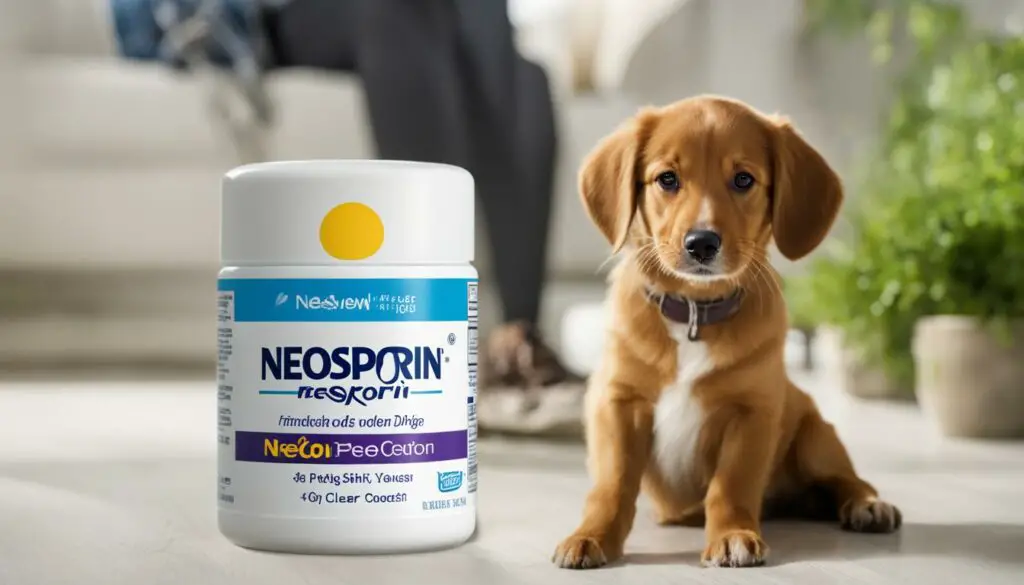
While Neosporin is commonly used to treat minor cuts and scrapes in humans, it is always best to consult your veterinarian before administering any medications to your dog. They will be able to determine the appropriate dosage and guide you on how to apply it safely. It is important to follow their instructions closely to avoid any potential side effects or complications.
When using Neosporin on your dog, it is important to consider the risk of them licking it off and ingesting it. Ingesting Neosporin can lead to gastrointestinal upset and potential toxicity. To prevent this, it is advisable to cover the area with a sterile dressing and prevent your dog from licking it.
If you are concerned about using Neosporin on your dog or if your dog has ingested a large amount of Neosporin, it is advisable to seek veterinary care. Your veterinarian can provide alternative pet-friendly treatment options and guide you on proper wound care for your dog.
Neosporin vs. Other Antibiotic Topicals for Dogs
When it comes to treating minor wounds in dogs, Neosporin is one brand of topical antibiotic products that pet owners often turn to. However, it’s important to note that there are other generic triple antibiotic ointments or creams with similar ingredients that can be used as alternatives. While Neosporin can be safe for dogs in small doses, it’s essential to consider the potential risks and benefits before using it on your furry friend.
Using Neosporin on dogs can be effective in promoting wound healing, but there are some precautions to keep in mind. Ingesting large amounts of Neosporin can be toxic for dogs, leading to gastrointestinal upset and other symptoms. Additionally, regular use of Neosporin can disrupt the natural balance of microorganisms in a dog’s gut, potentially causing gastrointestinal issues. Therefore, it’s advisable to consult your veterinarian for guidance on the best treatment options for your dog’s wounds.
It’s also worth noting that Neosporin is just one option among many pet-friendly treatment alternatives. Your veterinarian can provide recommendations for other topical ointments or creams that can be used safely on dogs. These alternatives can help prevent the risk of your dog ingesting the medication and experiencing any adverse effects. Always remember to consult your veterinarian for the best course of action when it comes to treating your dog’s wounds.
| Treatment | Pros | Cons |
|---|---|---|
| Neosporin | – Effective in promoting wound healing – Widely available |
– Can be toxic if ingested in large amounts – Disrupts gut microorganisms with regular use |
| Generic Triple Antibiotic Ointment | – Similar ingredients to Neosporin – Cost-effective |
– The same risks of ingestion as Neosporin – Potential disruption of gut microorganisms |
| Pet-friendly Antibacterial Ointments | – Formulated specifically for dogs – Less risk of ingestion |
– May not be as widely available – Varying effectiveness |
Conclusion
While Neosporin is a commonly used topical antibiotic for treating minor wounds in dogs, there are alternative pet-friendly options available. Ingesting large amounts of Neosporin can be toxic for dogs, and regular use can disrupt their gut microorganisms. It’s important to consult your veterinarian for guidance on the best treatment options for your dog’s wounds and to prevent the risk of ingestion. Ultimately, the well-being of your furry friend should be the top priority when choosing the appropriate wound care treatment.
When to Use Neosporin on Dogs
Neosporin can be a helpful treatment for minor cuts and scrapes on dogs, but it is important to use it appropriately and with veterinary guidance. While small doses are generally safe, it is crucial to take preventative measures to ensure that your dog does not ingest the medication, as large amounts can be toxic. Neosporin should only be used on dogs when recommended by a veterinarian and for specific situations.
When it comes to minor wounds, such as superficial cuts and scratches, Neosporin may not always be necessary. Most of these injuries can heal on their own with proper wound care, which includes cleaning the area with mild soap and water, gently patting it dry, and keeping it clean and dry. If the wound is bleeding heavily, deep, or appears severe, it is important to seek veterinary attention instead of relying solely on Neosporin.
In cases where Neosporin is deemed appropriate by your veterinarian, it is crucial to follow their instructions carefully. They will provide guidance on the proper application and dosage for your dog’s specific wound. It is also important to monitor your dog for any signs of adverse reactions, including redness, swelling, or an increase in discomfort. If your dog shows any signs of a negative reaction to Neosporin, contact your veterinarian immediately.
Emergency veterinary care
If your dog ingests a large amount of Neosporin or experiences any adverse effects, it is crucial to seek emergency veterinary care. Symptoms of Neosporin ingestion in dogs can include vomiting, diarrhea, tremors, seizures, and loss of appetite. Prompt medical attention can help mitigate the potential toxicity and ensure your dog receives the appropriate treatment.
| Key Points |
|---|
| Neosporin can be used on dogs for minor cuts and scrapes with veterinary guidance. |
| It is important to prevent your dog from ingesting Neosporin, as large amounts can be toxic. |
| Follow your veterinarian’s instructions for the proper application and dosage of Neosporin. |
| Monitor your dog for any signs of adverse reactions and contact your veterinarian if any occur. |
| If your dog ingests a large amount of Neosporin or experiences adverse effects, seek emergency veterinary care. |
Neosporin Precautions for Dogs
When it comes to using Neosporin on dogs, it is essential to take precautions to ensure their safety and well-being. While Neosporin can be safe in small doses with veterinary guidance, there are specific measures you should follow to prevent any potential complications.
Avoid ingesting Neosporin: Dogs can be curious creatures, and they may try to lick or ingest the Neosporin applied to their wounds. Ingesting large amounts of Neosporin can lead to gastrointestinal upset and potential toxicity. To prevent this, cover the treated area with a sterile dressing and ensure your dog cannot lick it.
Seek immediate veterinary care: If you suspect that your dog has ingested a significant amount of Neosporin or is exhibiting symptoms of neosporin poisoning, such as diarrhea, vomiting, or seizures, it is crucial to seek immediate veterinary care. Your veterinarian will be able to provide the necessary treatment and guidance.
Consult with your veterinarian: Before using Neosporin or any other medication on your dog, always consult with your veterinarian. They can assess your dog’s specific situation and provide you with the appropriate guidance and dosage recommendations. Your veterinarian may also suggest alternative pet-friendly treatment options to ensure your dog’s well-being.
| Precautions for Using Neosporin on Dogs | |
|---|---|
| Avoid ingestion of Neosporin by covering the treated area with a sterile dressing. | Prevents potential toxicity. |
| Seek immediate veterinary care if your dog has ingested a significant amount of Neosporin or is displaying symptoms of poisoning. | Prompt treatment is essential. |
| Consult with your veterinarian before using Neosporin or any other medication on your dog. | Ensure appropriate guidance and dosage. |
By following these Neosporin precautions, you can help safeguard your dog’s health and prevent any potential complications. Remember, your veterinarian is your best source of advice and guidance when it comes to your dog’s well-being, so never hesitate to reach out to them for assistance and information.
Alternative Treatments for Dog Wounds
While Neosporin can be used on dogs in small doses, there are alternative pet-friendly options for treating minor wounds. These alternatives can provide effective healing without the potential risks associated with Neosporin.
1. Cleaning the Wound:
- Using mild soap and water to gently clean the wound is an essential first step in wound care for dogs. This helps remove dirt and bacteria that may be present on the skin’s surface.
- Drying the wound thoroughly with a clean towel is important to prevent bacterial growth and promote proper healing.
2. Pet-friendly Antibacterial Ointments:
- There are pet-friendly antibacterial ointments available that are specifically formulated for use on dogs. These ointments can provide similar benefits to Neosporin without the potential risks of ingestion or adverse reactions.
- Consult your veterinarian for recommendations on pet-friendly ointments that are safe and effective for your dog’s specific needs.
3. Preventing Licking and Irritation:
- Preventing your dog from licking the wound is crucial to avoid further irritation or contamination. You can use an Elizabethan collar or a pet-friendly bandage to protect the wound and prevent licking.
- Monitor the wound regularly for signs of infection, such as redness, swelling, or discharge. If you notice any concerning changes, consult your veterinarian for further guidance.
4. Seeking Veterinary Care:
If the wound is deep, bleeding heavily, or appears severe, it is important to seek veterinary care. Your veterinarian can assess the wound, provide proper cleaning and treatment, and ensure that it heals correctly.

Remember, it is always essential to consult your veterinarian for guidance on the best treatment options for your dog’s specific condition. They can provide personalized recommendations and ensure that your dog receives the appropriate care for their wound.
Importance of Veterinary Consultation for Dog Wounds
When it comes to treating dog wounds, it is crucial to consult with a veterinarian before administering any medications, including Neosporin. Your veterinarian is best equipped to assess your dog’s situation and provide appropriate guidance on wound treatment. They can also help determine if your dog has ingested a toxic amount of Neosporin and provide the necessary treatment.
By consulting with a veterinarian, you ensure that your dog receives the proper care and attention they need. Veterinarians have the knowledge and expertise to assess the severity of the wound and recommend the most effective treatment plan. They can also advise on the safe use of Neosporin or alternative pet-friendly options for wound care.
Benefits of Veterinary Consultation:
- Accurate Assessment: Veterinarians have the training and experience to accurately assess the severity of your dog’s wound. They can determine if it requires immediate attention or if it can be managed at home with proper care.
- Proper Medication: If Neosporin is deemed appropriate for your dog’s wound, your veterinarian can provide the proper dosage and instructions for safe application. They can also advise on potential side effects and interactions with other medications your dog may be taking.
- Preventative Measures: Veterinarians can provide guidance on how to prevent your dog from ingesting Neosporin or other harmful substances. This may include the use of protective coverings or deterrent sprays to prevent licking.
- Monitoring and Follow-up: By consulting with a veterinarian, you ensure that your dog’s progress is monitored and any necessary follow-up care is provided. This helps to ensure proper healing and reduces the risk of complications.
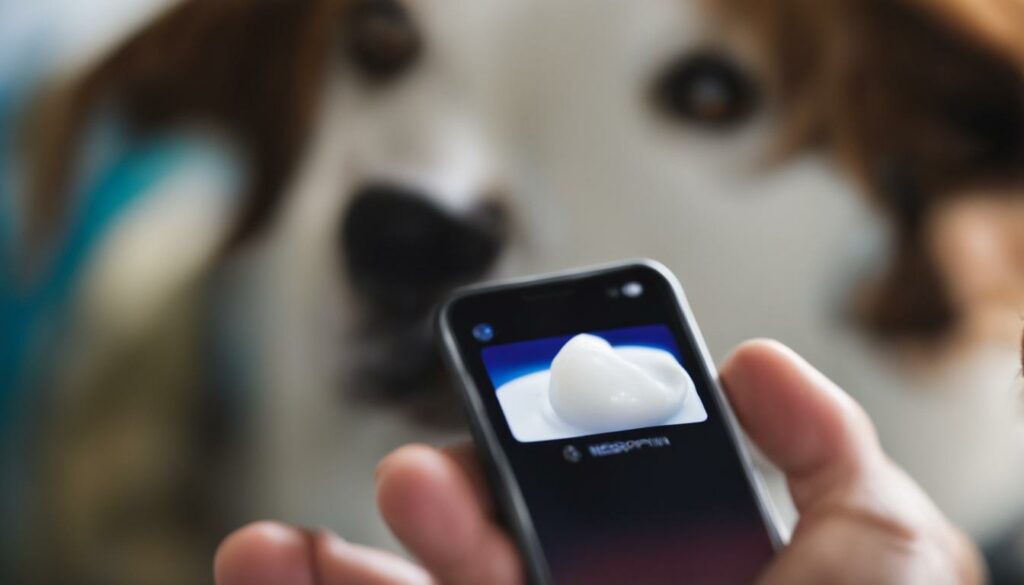
Overall, seeking veterinary consultation for dog wounds is essential for the health and well-being of your furry friend. Your veterinarian can provide the necessary expertise and guidance to ensure proper wound care and treatment. Remember, the safety and comfort of your dog should always be the top priority.
When to Seek Emergency Veterinary Care
If your dog has ingested Neosporin and is experiencing severe symptoms, it is crucial to seek immediate veterinary care. Some of the signs that your dog may be experiencing neosporin poisoning include severe diarrhea, vomiting, tremors, excessive drooling, skin lesions, seizures, or a lack of appetite. These symptoms can indicate a toxic reaction to the medication and require prompt treatment to ensure your dog’s well-being.
When you notice these symptoms, it is essential to contact your veterinarian as soon as possible. They will be able to provide guidance over the phone and advise you on the next steps to take. In some cases, they may recommend bringing your dog to an emergency veterinary clinic for immediate evaluation and treatment.
It’s important to remember that every dog reacts differently to ingesting Neosporin, and the severity of their symptoms can vary. Even if your dog’s symptoms seem mild, it is always best to err on the side of caution and consult a professional. Veterinarians are trained to assess the situation and provide appropriate care, ensuring your dog’s health and safety.
By seeking emergency veterinary care when your dog displays symptoms of neosporin poisoning, you are taking a proactive approach to their well-being. Prompt treatment can make a significant difference in their recovery and help prevent any potential complications from arising.
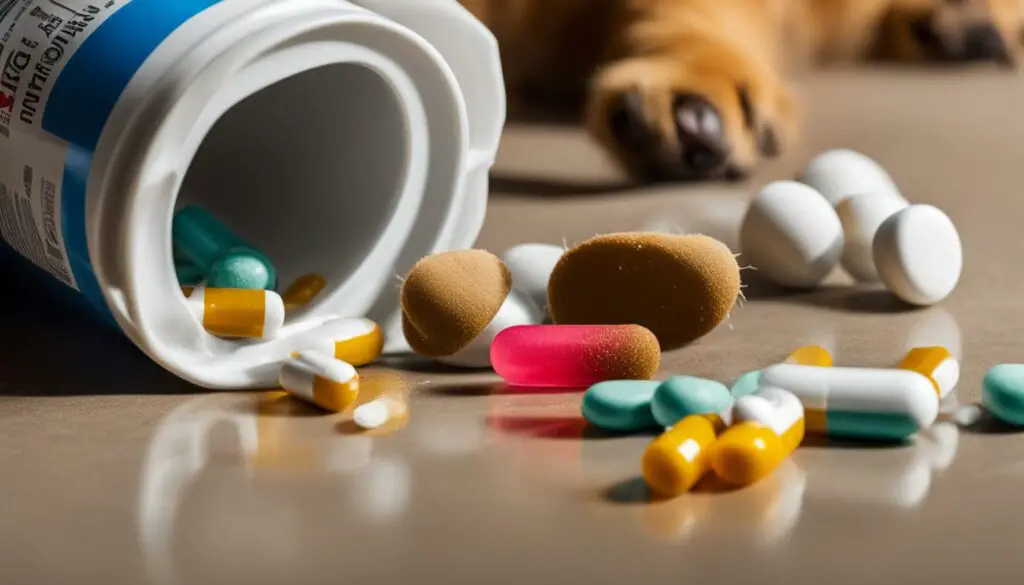
Neosporin Allergies in Dogs
While Neosporin can be a helpful medication for treating minor wounds in dogs, it is important to be aware of the potential side effects and allergic reactions that can occur. Some dogs may have an allergic reaction to Neosporin or similar topical antibiotic products. These allergic reactions can range from mild to severe, depending on the individual dog’s sensitivity.
Common signs of an allergic reaction to Neosporin in dogs may include a mild rash, redness, hives, or facial swelling. In rare cases, dogs may experience anaphylaxis, which is a severe allergic reaction that requires immediate veterinary attention. If you notice any of these symptoms after applying Neosporin to your dog’s wound, it is important to seek veterinary care right away.
When using Neosporin or any other topical medication on your dog, it is always a good idea to monitor their reaction closely. While Neosporin allergies are not common, they can occur in some dogs. If you suspect that your dog may be allergic to Neosporin, it is best to discontinue use and consult your veterinarian for alternative treatment options.
Summary:
- Neosporin can cause allergic reactions in some dogs.
- Signs of an allergic reaction may include a rash, redness, hives, or facial swelling.
- In rare cases, dogs may experience severe allergic reactions that require immediate veterinary attention.
- If you suspect your dog is allergic to Neosporin, discontinue use and consult your veterinarian for alternative treatments.
| Allergy Symptoms | Treatment |
|---|---|
| Mild rash, redness, hives | Discontinue use of Neosporin and monitor the dog closely. Consult a veterinarian if symptoms persist or worsen. |
| Facial swelling | Seek immediate veterinary care as this may indicate a severe allergic reaction. |
| Anaphylaxis | Immediately take your dog to a veterinarian for emergency treatment. |
It is important to prioritize your dog’s health and well-being when treating any wounds or injuries. If you have any concerns about using Neosporin or other topical medications on your dog, always consult your veterinarian for guidance and alternative treatment options.
Proper Wound Care for Dogs
When it comes to caring for your dog’s wounds, it is important to follow proper wound care techniques to ensure their well-being and promote healing. Here are some essential steps to take:
- Clean the wound: Begin by gently cleaning the wound with mild soap and water. This will help remove dirt, bacteria, and debris from the affected area.
- Dry the wound: After cleaning, pat the wound dry with a clean towel. It is crucial to ensure that the wound is completely dry before proceeding with any further steps.
- Keep the wound clean and dry: It is essential to prevent the wound from becoming infected. Keep it clean by regularly checking for any signs of redness, swelling, or discharge. If necessary, consult your veterinarian for an appropriate pet-friendly antibacterial ointment.
- Prevent your dog from licking the wound: Dogs have a natural instinct to lick their wounds, but excessive licking can delay healing and introduce bacteria. To prevent this, consider using a protective cone or covering the wound with a sterile dressing. Consult your veterinarian for the best method to prevent licking based on your dog’s specific needs.
Remember, proper wound care is crucial for your dog’s healing process. If you have any concerns or if the wound appears severe, always consult your veterinarian for guidance and appropriate treatment.

| Common Mistakes to Avoid | Proper Techniques to Follow |
|---|---|
| Applying harsh chemicals or hydrogen peroxide to the wound | Use mild soap and water instead to clean the wound |
| Allowing your dog to lick the wound excessively | Use a protective cone or dressing to prevent licking |
| Ignoring signs of infection, such as excessive redness or discharge | Regularly monitor the wound and consult your veterinarian if any signs of infection appear |
| Using non-pet-friendly ointments or medications | Consult your veterinarian for appropriate pet-friendly wound care products |
“Proper wound care is essential for promoting healing and preventing complications. Remember to consult your veterinarian for guidance on the best wound care techniques for your dog.”
Pet First Aid Kit Essentials
When it comes to your pet’s health and safety, having a well-stocked pet first aid kit is crucial. It allows you to provide immediate care in case of minor injuries or emergencies until you can get your furry friend to the veterinarian. Here are some essential items to include in your pet first aid kit:
- Gauze pads and adhesive tape: These are essential for covering wounds and stopping bleeding.
- Hydrogen peroxide: This can be used to induce vomiting if your pet ingests something toxic, but it should only be done under the guidance of a veterinarian.
- Clean towels: These are useful for cleaning wounds or drying your pet after bathing.
- Pet-friendly antibacterial ointment: This can be used to prevent infection in minor cuts and scrapes.
- Blunt-ended scissors: These are handy for cutting tape or trimming hair around a wound.
- Tweezers: They can be used to remove splinters or ticks from your pet’s skin.
- Disposable gloves: These will protect you from any potential infections when treating your pet.
- Emergency contact information: Make sure to have the phone number of your veterinarian and a nearby emergency veterinary clinic readily available.
It is important to regularly check and replenish your pet first aid kit to ensure that all items are up to date and in good condition. Additionally, remember to consult your veterinarian for personalized advice on which specific items to include in your kit based on your pet’s needs and any existing medical conditions.
Remember, while a pet first aid kit is a valuable resource, it is not a substitute for professional veterinary care. If your pet experiences a serious injury or shows signs of illness, it is always best to seek immediate veterinary attention.
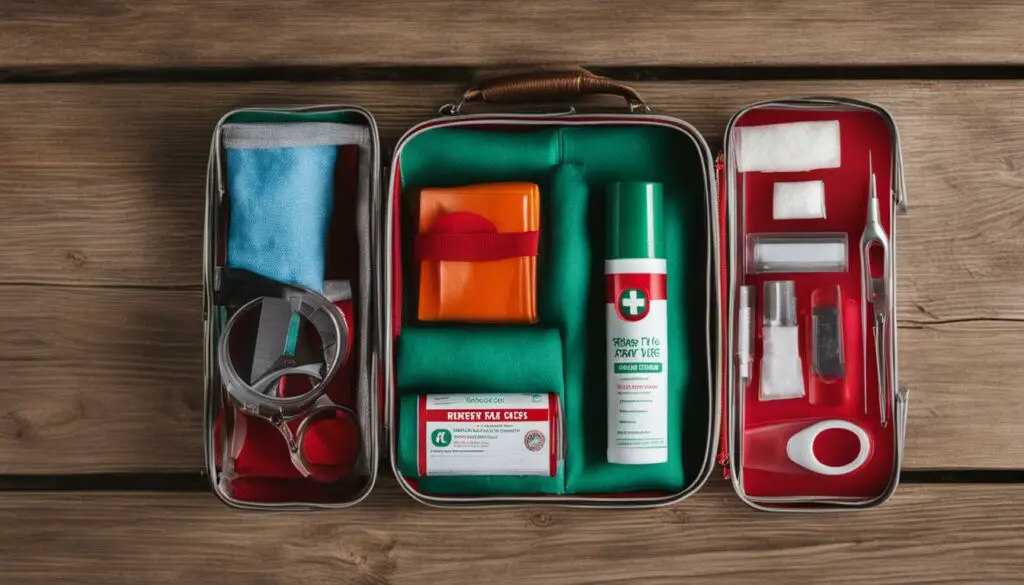
Having a well-prepared pet first aid kit can provide you with peace of mind knowing that you are equipped to handle minor injuries and emergencies. By being proactive and having the necessary supplies on hand, you can ensure that your furry friend receives prompt care when they need it most.
Conclusion
In conclusion, it is important to be cautious when it comes to using Neosporin on dogs. While it can be safe in small doses with veterinary guidance, it is crucial to prevent your dog from ingesting it, as large amounts can be toxic. Symptoms of Neosporin toxicity in dogs can range from gastrointestinal upset to seizures.
Consulting your veterinarian is always the best course of action when it comes to treating your dog’s wounds. They can provide guidance on safe and effective alternatives to Neosporin, as well as proper wound care techniques. Remember, each dog is unique, and your veterinarian is the best person to advise you on what is best for your furry friend.
By being proactive and taking preventative measures, such as covering wounds and preventing your dog from licking the area, you can help reduce the risk of Neosporin ingestion. Additionally, having a well-stocked pet first aid kit on hand can ensure you are prepared to handle minor injuries and emergencies, while also following the guidance of your veterinarian.
Ultimately, the health and well-being of your dog should always be the top priority. By working closely with your veterinarian and following their advice, you can ensure the best possible care for your furry companion and provide them with the treatment they need without unnecessary risks.
FAQ
Can I use Neosporin on my dog?
Neosporin can be safe for dogs in small doses with the permission and instructions of your veterinarian. However, it is important to consult your veterinarian before administering any medications to your pet.
What happens if my dog ate Neosporin?
If your dog has ingested Neosporin, it can be toxic and lead to symptoms such as diarrhea, vomiting, tremors, and seizures. Immediate veterinary care should be sought in such cases.
What should I do if my dog ate Neosporin?
If your dog has consumed a large amount of Neosporin or is displaying symptoms of intoxication, it is important to seek immediate veterinary care. Contact your veterinarian or the Pet Poison Helpline® at (855) 764-7661 for assistance.
Is Neosporin safe for dogs?
Neosporin can be safe for dogs in small doses with the permission and instructions of your veterinarian. However, it is important to take preventative steps to ensure your dog does not ingest the Neosporin, as large amounts can be toxic.
How does Neosporin compare to other antibiotic topicals for dogs?
Neosporin is one brand of topical antibiotic wound care products, but there are other generic triple antibiotic ointments or creams with similar ingredients. It is important to consider the potential risks and benefits of using Neosporin on your dog and consult your veterinarian for guidance.
When should I use Neosporin on my dog?
Neosporin should only be used on dogs with the permission and instructions of your veterinarian. It is important to take preventative measures to ensure your dog does not ingest the Neosporin, as it can be toxic in large amounts. Your veterinarian can guide you on when and how to use Neosporin on your dog.
What precautions should I take when using Neosporin on my dog?
It is important to prevent your dog from ingesting Neosporin by covering the treated area with a sterile dressing. If your dog ingests a large amount of Neosporin or shows symptoms of intoxication, immediate veterinary care should be sought.
Are there alternative treatments for dog wounds?
Yes, there are alternative pet-friendly options for treating minor wounds in dogs. These may include cleaning the wound with mild soap and water, applying a pet-friendly antibacterial ointment, and preventing your dog from licking the area. Consult your veterinarian for guidance on the best treatment options.
Why is veterinary consultation important for dog wounds?
It is crucial to consult your veterinarian before administering any medications, including Neosporin, to your dog. Your veterinarian can assess your dog’s situation, provide appropriate guidance on wound treatment, and determine if your dog has ingested a toxic amount of Neosporin.
When should I seek emergency veterinary care?
If your dog has ingested a large amount of Neosporin or is displaying severe symptoms such as diarrhea, vomiting, tremors, seizures, or a lack of appetite, it is important to seek immediate veterinary care. These symptoms may indicate a toxic reaction to the medication.
Can dogs have an allergic reaction to Neosporin?
Yes, some dogs may have an allergic reaction to Neosporin or similar products. This can manifest as a mild rash, redness, hives, or facial swelling. In rare cases, it can lead to anaphylaxis, a severe allergic reaction that requires immediate veterinary attention.
What is proper wound care for dogs?
Proper wound care for dogs includes cleaning the area with mild soap and water, gently patting it dry, and keeping it clean and dry. If the wound is bleeding heavily, deep, or appears severe, it is important to seek veterinary attention. Consult your veterinarian for specific wound care instructions.
What should a pet first aid kit include?
A well-stocked pet first aid kit should include items such as gauze, adhesive tape, hydrogen peroxide, clean towels, and a pet-friendly antibacterial ointment. Consult your veterinarian for guidance on the specific items to include in your pet first aid kit.
Source Links
- https://www.petpoisonhelpline.com/pet-tips/my-dog-ate-neosporin-is-it-safe/
- https://www.dailypaws.com/dogs-puppies/health-care/dog-medications/can-you-put-neosporin-on-dog
- https://www.akc.org/expert-advice/health/can-you-use-neosporin-on-dogs/

